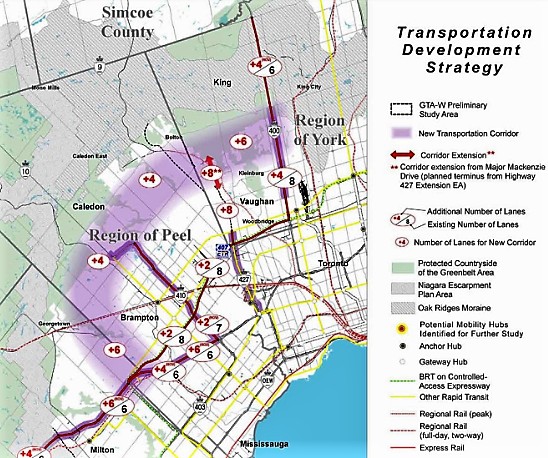
Councillors in support of new developer-fuelled highway, while endangered species don’t stand a chance
It’s a sight familiar to every driver in Ontario. It’s become so common place that the typical feeling of unease that causes your eyes to turn away has been replaced with annoyance over having to swerve out of the way.
The sight of a mangled mass of fur, blood and bone on the side of the road has become a fixture on the side of Ontario highways. Racoons, cottontail rabbits, Canada Geese, and deer, reduced to nothing more than a chunky smear of pink on the highway.
The vast networks of pavement serve as great connectors to our major cities, but they fragment the natural habitat of thousands of mammals and birds, all of whom must make the treacherous crossing of roads filled with speeding vehicles to feed and breed and migrate between seasons.
Now, the provincial government wants to build another of these highways, directly through one of Southern Ontario’s last remaining pieces of pristine habitat, home to many endangered and threatened species.
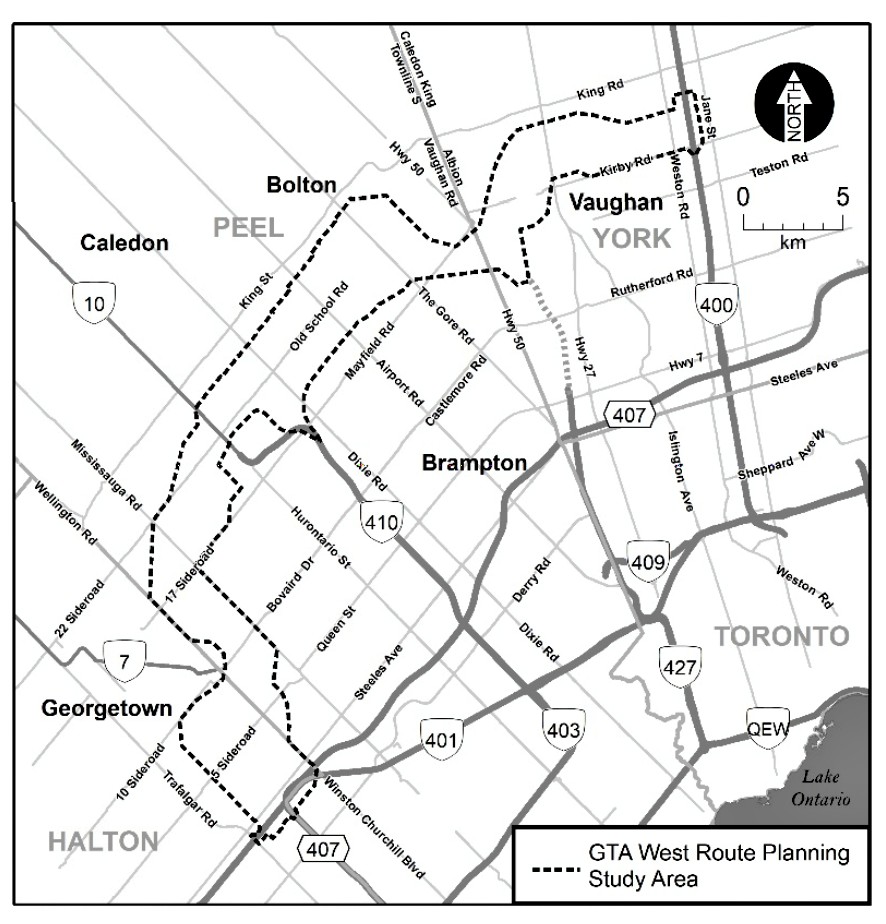
Currently, the preferred route for the GTA West Highway sees the corridor running west from Vaughan through Caledon, then arcing south-west, skirting the edge of Brampton on its way toward the 401/407 between Mississauga and Milton. This path will take the highway on or near the edge of the provincially protected Greenbelt and the Oak Ridges Moraine.
“This is kind of under the radar for most people right now,” says Tim Gray, the executive director of Environmental Defence. “It’s really targeted the best remaining natural habitats in Vaughan. The best remaining forested areas in Vaughan will end up having a highway running right through the middle of them.”
A look at the province’s own list of endangered and threatened species and the range and movement patterns of these animals, makes it easy to see how disruptive such a highway will become to animals that are already on the brink of disappearing from Ontario.
Protected animals under Ontario’s Endangered Species Act that call the area home include a long list of amphibians, insects, birds and fish like the Jefferson salamander (endangered), the bank swallow (threatened), the barn swallow (threatened), the bobolink (threatened), the Cerulean warbler (threatened), the eastern meadowlark (threatened), the eastern wood-pewee (special concern), the Henslow’s sparrow (endangered), the monarch butterfly (special concern) and the American eel (endangered), to name just a few.
Aside from the urbanization of the province and the loss of habitat, one of the largest threats to animals nearing extinction is the fragmentation of their habitat. Many animals move over long ranges either to feed or breed, having a road run directly through this range opens up the risk of them ending up dead on the side of a highway.
Each loss of animal life, while insignificant to many who drive, represents an inching closer to species loss. It’s a slow progression, and one that has been happening across Canada, and the globe, for decades.
In Canada, bird populations have decreased by 12 percent since 1970, mainly due to loss of habitat like grassland and wetlands these birds rely on for breeding. Some of the largest declines are seen in migratory shorebirds. It isn’t just Canada though. Several new scientific reports have been published in 2019 that document the startling loss of biodiversity that is occurring across the world, mostly due to climate change, revealing that over 1 million species are at risk, and almost a quarter of species in incredibly biodiverse areas like the Galapagos could be lost due to climate change, even if emissions are reduced to the Paris Accord targets.
However, the PC government under Premier Doug Ford has made it clear that protecting species and habitat are at the bottom of their priority list.
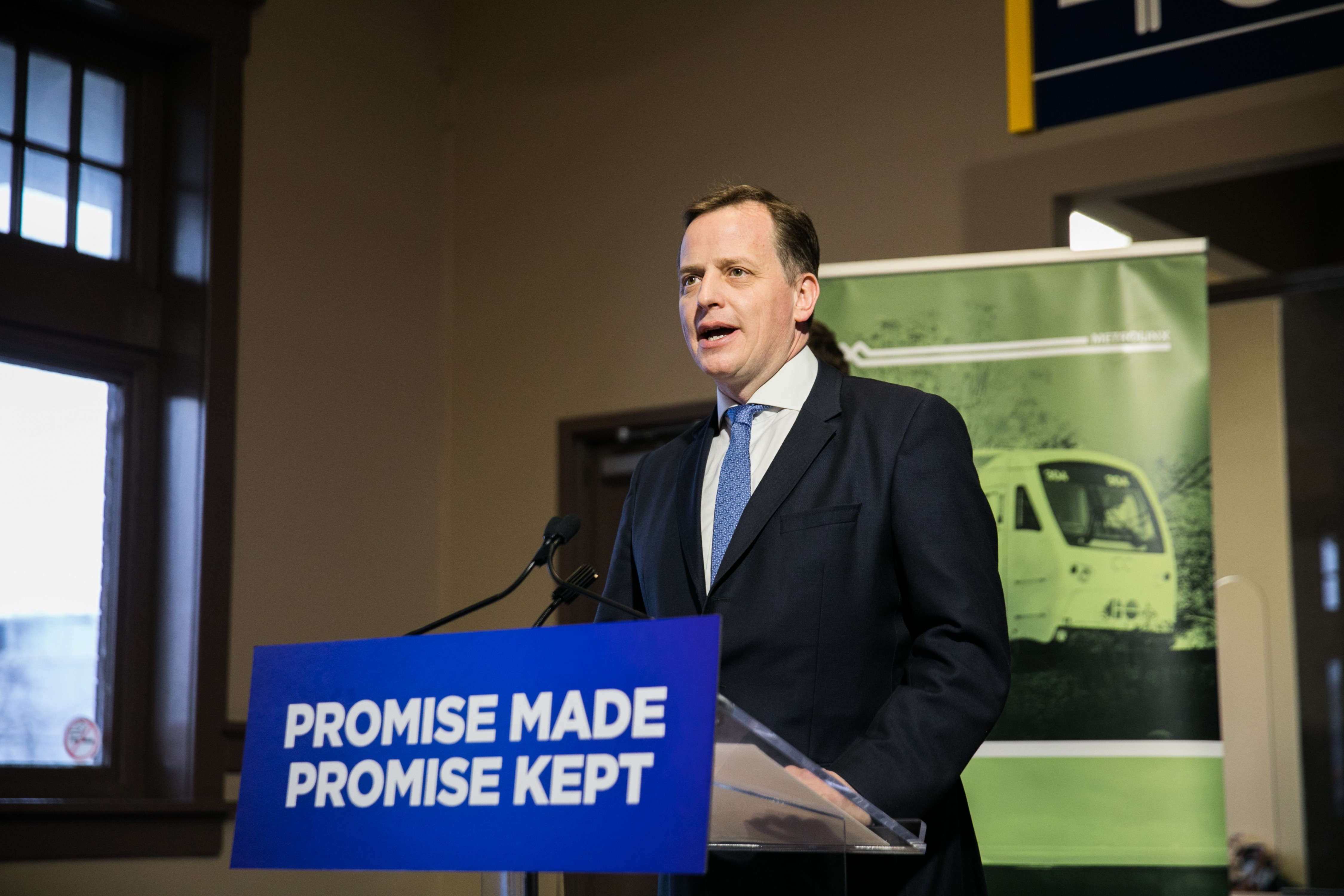
Jeff Yurek, Ontario's minister of the environment, conservation and parks
A series of changes to Ontario’s growth plan, planning act, the provincial policy statement and the Endangered Species Act, all make it easier for developers to create large sprawling subdivisions.
“All of these are aimed at supporting the development industry that develops on farmland or natural areas,” Gray says. “I think there’s a real sense here that most of the changes occurring to planning and transportation in southern Ontario are to favour the sprawl developers.”
Pristine forests, typically owned by conservation bodies are usually the first to be scooped up by the province for these types of projects, Gray says.
“Land that’s owned by conservation authorities is land that is owned by a public agency and you’re not paying the same cost as you would be if you had to buy-out a farm or a house,” he says. “They’re just going for least cost when they route these things rather than minimizing environmental impact.”
Ford’s connection to the development industry has reared its conflicting head many times since he was elected last year, and the development interests could also be partially responsible for putting him in the Premier’s chair in the first place.

“Of course the development industry is a huge, huge donor to third-party efforts to elect the current government,” Gray says.
The provincial rules make it illegal for developers or any other private interest to directly contribute to political campaigns. The 2018 campaign was the first when such a ban on these donations was in place, and developers shifted from direct donations to giving money to third-parties with the same interest. One popular example is the Ontario Proud Facebook page, which got the lion’s share of its funding from the development industry to run campaigns geared at attacking and discrediting Liberal Premier Kathleen Wynne.
Since being elected, Ford has done his best to make life easier for the development industry.
Ford was set to give builders a boost with Schedule 10 of the proposed Bill 66, which would have given municipalities the power to override provincial protections on sensitive lands by enacting “open for business” bylaws. Following public outcry over his latest attempt to give developers what they want, the government backpedaled on the proposal, saying those clauses would be removed from the draft bill.
Also, Ford was infamously captured ahead of last June’s election promising developers at a private meeting in Markham that he would open up a “big chunk” of the protected Greenbelt for development, if elected. Captured in the leaked video, Ford tells a group of men that after talking to some of the “biggest developers in the country” it was their idea and his as well: “Give us property and we’ll build and we’ll drive the costs down.” After a considerable backlash, Ford retracted the privately made statement caught on video before the election and noted he would not open up the Greenbelt, which because of its watersheds and other important ecological features is protected by provincial legislation — a sore point for developers who have already assembled lands in and around the protected areas.
The goals of developers and Ford may have been sidetracked by strong public reaction, but the GTA West Corridor is an even bigger prize to the development industry players looking to build in and around the giant corridor. It would open up massive swaths of agricultural land whose future use has been in limbo for years, triggering sprawling development to the edge of the Greenbelt and possibly beyond. The highway would go against recent amendments to provincial growth legislation enacted to curb sprawl and create a much more compact, transit friendly urban footprint across Southern Ontario.
While the PC’s argue the highway, which new plans show will be a four to six lane road with a separate “transitway” directly adjacent to the highway for buses and potentially future light rail, is needed to relieve traffic congestion on the province’s 400 series network, it’s clear from the minutes of public meetings that it’s the development industry lobbying hardest for the plan.
In an opinion article published in several GTA newspapers last August, Dave Wilkes, president and CEO of the Building Industry and Land Development Association (BILD), a lobby group for developers, wrote: “The GTA Corridor West was not just a proposed highway. It was a means to unlock both commercial and residential land for development.”
He lamented the cancellation of the highway by the previous Liberal government. “Something must be done to improve traffic congestion in our region.” His association is a highly visible lobby group that advocates for what benefits developers. Its activities commonly involve pressuring governments to open up lands for residential and commercial building.
On the same token, local councillors also appear to be concerned about little less than the timing of this highway as opposed to any real conviction for the loss of habitat or local species.
“After moving so slow, it’s suddenly moving so fast, I like it,” said Brampton Councillor Michael Palleschi during Peel’s regional council meeting last month. Palleschi and his late father Paul, who chaired Brampton’s planning committee for decades, have been strong supporters of the development industry. The senior Palleschi received the lion’s share of his campaign contributions from builders.
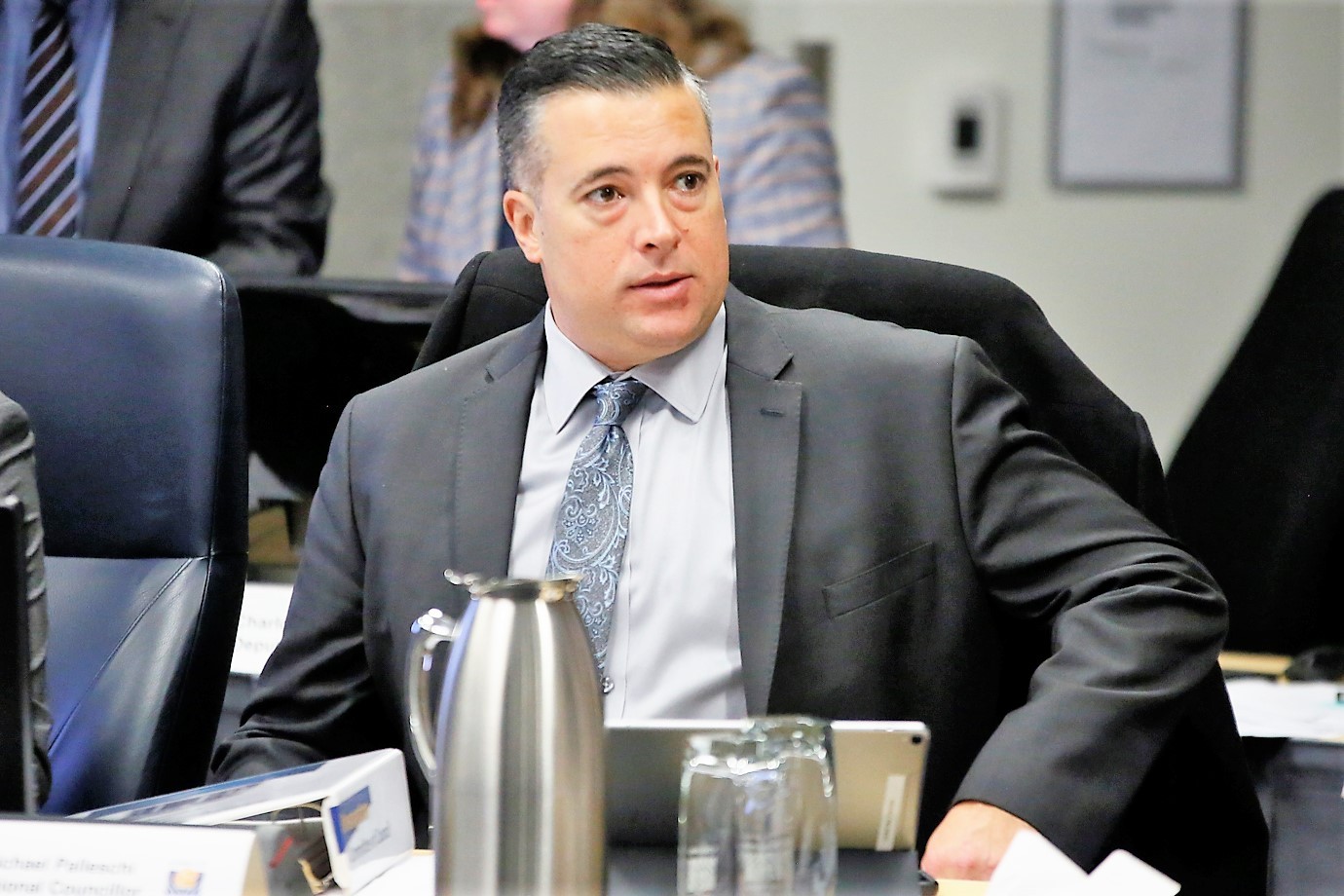
Brampton and Peel Region Councillor Michael Palleschi
But the Liberals, under Kathleen Wynne, sent a strong message when they cancelled the entire plan, with external experts and government advisors stating the highway was a bad form of planning, was not the type of modern transportation design the province should be investing in, and would only lead to more sprawl and gridlock.
Environmental groups also pointed out how much damage it would do to the climate.
But a recent presentation from provincial officials and consultants under the PC government at regional council informed Peel councillors that there are still several years in between the current study and any eventual shovels in the ground. Current plans have the final environmental assessment report set for submission in late 2022.
“You’re really putting us in a position not to be able to approve an official plan,” said Caledon Councillor Jennifer Innis, before asking whether those timelines could be shortened to get the highway built faster. “Time is of the essence.”
Her ardent support of the plan has raised concerns of conflict because of the possibility that members of her family could benefit by selling property for development. It’s also been pointed out that her lobbying efforts appear to run contrary to Innis’s role as Chair of the Toronto Region Conservation Authority.
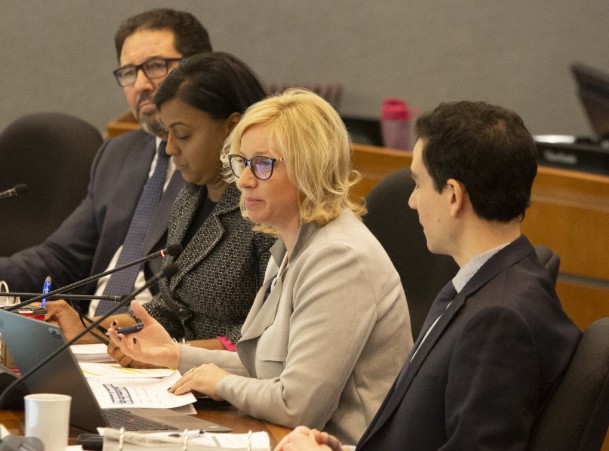
Caledon and regional Councillor Jennifer Innis
After she won the vote by members to get the job, the Toronto Star reported that the agency safeguarding the area’s watershed had elected Innis after unusual behind-the-scenes lobbying, according to the Star’s reporting, including calls from a developer and a Progressive Conservative MPP. The lobbying came as the development industry told the Ford government that the coming “housing supply action plan” should end “mandate creep” – overstepping authority and stifling homebuilding – by TRCA, and Ontario’s 35 other conservation authorities. Shortly after, the PCs sent out letters to the conservation authorities warning them that they would not be allowed to engage in mandate creep, which could help prevent sprawl.
When Innis asked the provincial officials to speed up approvals for the highway, a seemingly contradictory move for the chair of a conservation authority, no promises were made.
After she got the job as chair of the conservation authority, the former head of the agency raised red flags.
Innis, who served as a PC political staffer in the early 2000s for ex-premier Ernie Eves and two cabinet ministers, said in an email to the Star that she did not know why developers and a PC party official might have urged fellow board members to support her candidacy and that “as a board, we will continue to advocate to protect and restore our watersheds.”
The former chair of TRCA, Maria Augimeri, who lost her bid for re-election by the board in a 11-10 vote that gave Innis the job, was blunt in her response to the Star.
“We have people sitting around the (board) table there now who are there for development interests, not for the interests of the drinking water for future generations.” She said builders will now seek any advantage. “That should not only worry people, that should frighten people.”
While Innis, who chairs one of the region’s conservation agencies, sits at the Peel council table, so does Karen Ras, the Chair of Credit Valley Conservation.
But while Innis has remained silent about the Ford government’s attempt to curtail the scope of work by provincial conservation agencies, Ras has been outspoken about the important work they do and fired back at the minister who is trying to tie the hands of those working to protect ecosystems.
She sent a strongly worded letter back to Jeff Yurek, minister of the environment, conservation and parks, after he sent a memo to conservation agencies directing them to “refocus” their work on four very narrow areas.
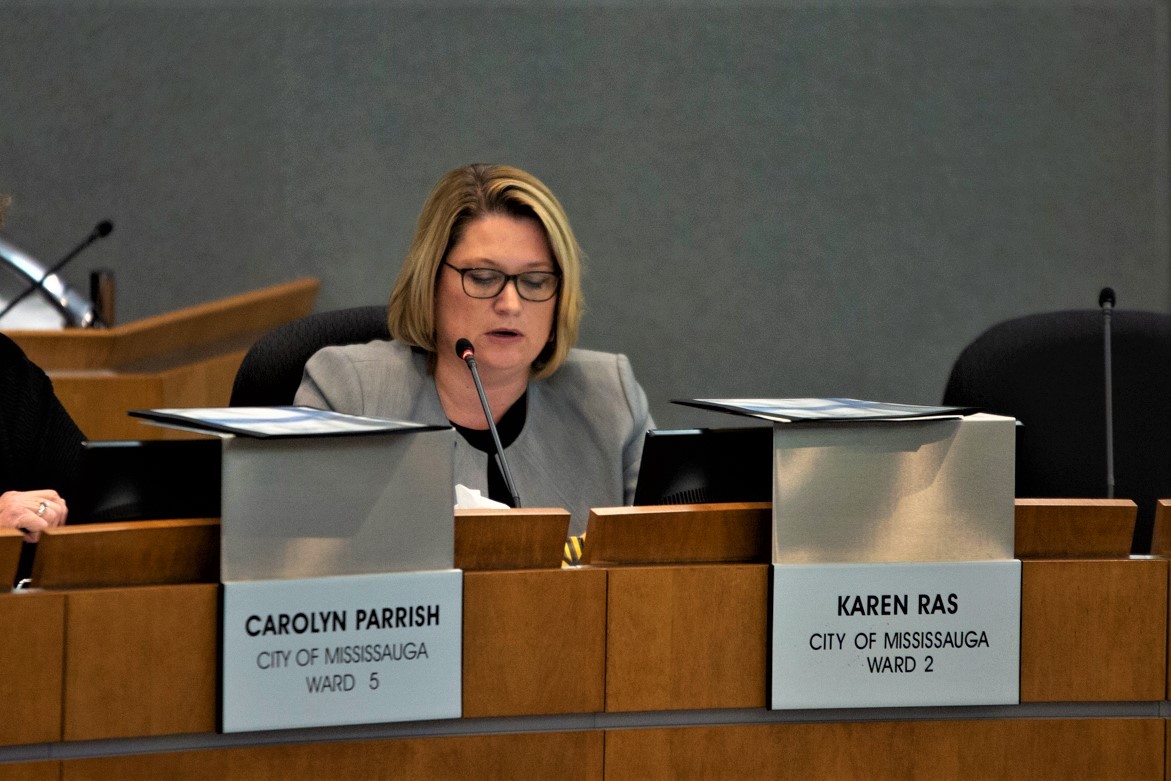
Mississauga and regional Councillor Karen Ras
“We find the content of your letter very troubling,” Ras responded to Yurek. She blasted him for directing provincial conservation authorities to “wind down” some of their work and said such instruction was irresponsible without legislative grounds to do so and without consulting the municipal partners who work closest with the agencies to ensure proper conservation is being carried out.
But Innis has been silent, and now is pushing a major 400-series highway that conservation groups say will be very disruptive, after the former chair of TRCA warned that it is now development interests controlling the agency Innis presides over.
Another confusing stance by local leaders is their simultaneous support for the local environment through the recent “climate emergencies” they declared, while voicing no opposition to the GTA-West Highway. At one Brampton council meeting, Councillor Rowena Santos brought forward the initiative to declare the climate emergency, which was approved unanimously, while at the same meeting, Palleschi pushed to approve the highway, which was also supported unanimously.
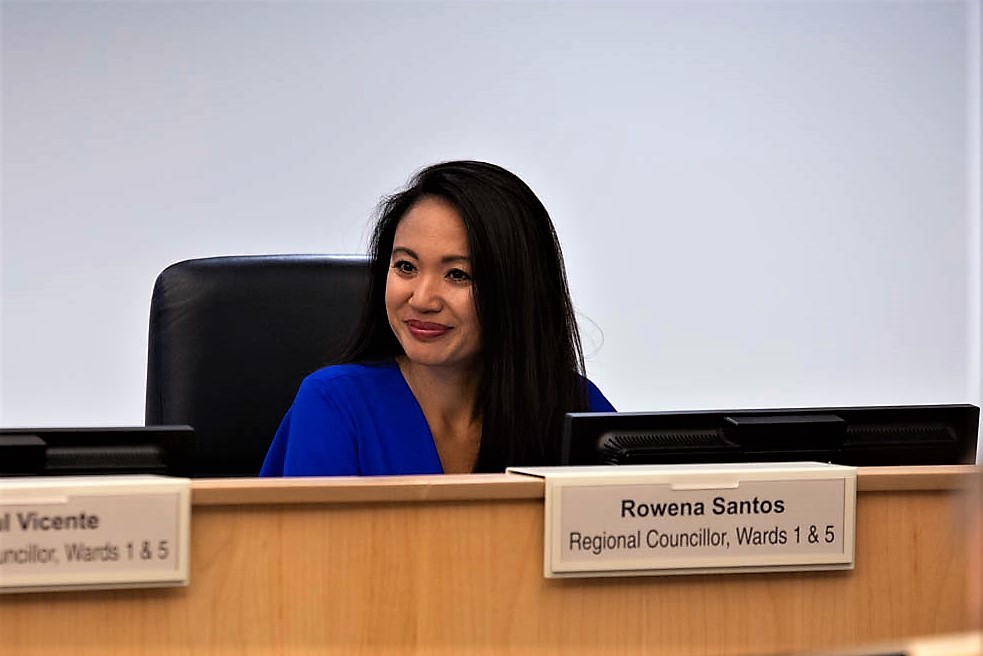
Brampton and regional Councillor Rowena Santos supports environmental protection, but also supports the new highway
The exact same thing then happened at a Peel Region Council meeting, when a climate emergency declaration was supported at the same meeting that saw the highway supported.
The glaring contradiction by local leaders suggests their talk of concern over the local ecosystem might be little more than political gesturing to score easy points with the public.
The bulk of the new highway will run directly through Caledon, and if completed, open up large swaths of land in that area that have been held in limbo for years as the GTA West Highway was under consideration. Developers have pushed for these lands to be released arguing the residential development is needed to support the region’s rapid growth projected in the years ahead. Their efforts have mostly been supported by local councillors — save for Councillor Annette Groves, who has previously stated her opposition to the highway.
Critics of the development industry — supported by provincial data contained in the previous government’s long-range growth plan — say the need claimed by developers is simply untrue; that there’s plenty of space for needed growth within current urban boundaries through 2032, and that allowing development outside those areas only invites sprawl, more gridlock and spiralling infrastructure costs.
“It’s the wrong kind of transportation system for the wrong kind of development,” Gray says.
Email: [email protected]
Twitter: @JoeljWittnebel
Submit a correction about this story


